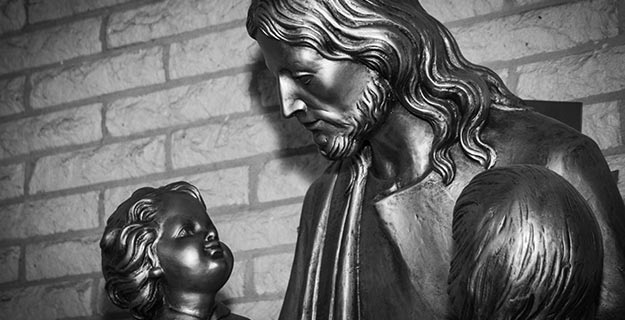St. Ignatius of Antioch (c. 35-c.108) was a spiritual giant for the first Christians. From father to son, mother to daughter, the story of his life and martyrdom were passed on in an awe-hushed atmosphere and during the Holy Sacrifice of the Mass his letters were often read alongside those of St. Paul.
Although the historical facts of his life are well authenticated by historians, legends, as normally occurs with larger-than-life figures, swiftly grew up around him.
The most winsome of these legends is bound up with the two names he bore and which he wrote in Greek at the head of his letters: “Ignatios o kai Theophoros”. In the Roman Empire men frequently identified themselves by two names, one for legal purposes and the other personal, united by the Latin formula qui et or in Greek o kai (who is): Ignatios, (ignis: fire) his family name, and Theophoros presumably adopted at baptism. Theophoros in Greek has two meanings: in the active mode it means “he who bears God”; in the passive mode it refers to “he who is carried by God”.
The passive meaning gave birth to the legend that Ignatius as a child had personally met the Lord Jesus and indeed that he was the child whom Jesus held in his arms and presented as a model to the apostles of man’s right relationship with God (see Matthew 18:2 and Luke 9:47). This was the opinion of the ancient writer, Anastasius the Librarian (c. 810 – c. 878) although neither Ignatius’s contemporary, St. Polycarp, nor Saint Irenaeus, nor any ancient Christian writer refer to this incident.
Nevertheless, the legend caught hold of mens’ imaginations. St. Francis de Sales, in a sermon, remarked: “How blessed was this glorious St. Ignatius, since he was taken up into Our Lord’s arms and given as an example to the Apostles!… What sacred, secret words Our Lord said to this happy child as He kissed him…engraving His own sacred name in the depths of his heart!” (Sermon on the Feast of the Purification of Mary)
The active sense of Theophoros gave rise to another legend by which, after his martyrdom, the Christians saw upon the heart of Ignatius, written in letters of gold, the name of the Lord Jesus Christ. And although historical records record that after the gruesome destruction of Ignatius’s body by the lions only the largest and hardest bones remained, men valued the legend because it revealed an evident truth: the heart of Ignatius was on fire for Jesus Christ.

